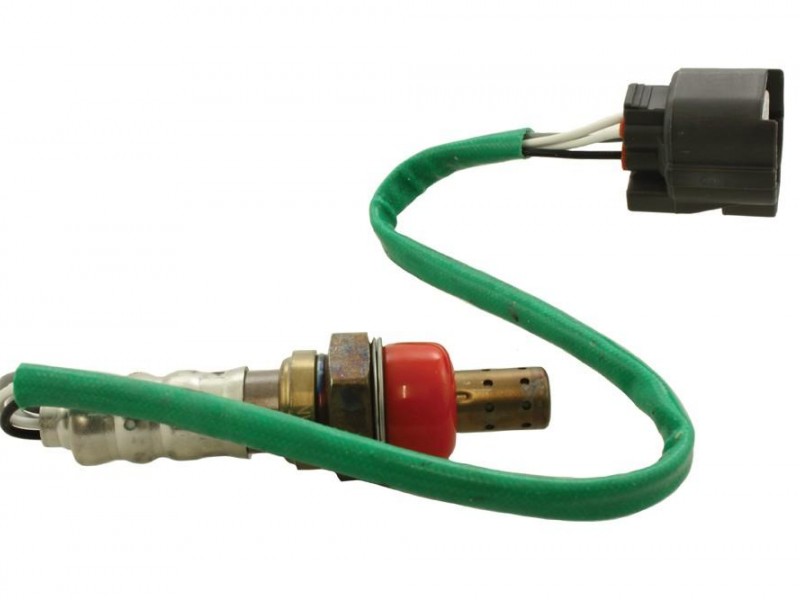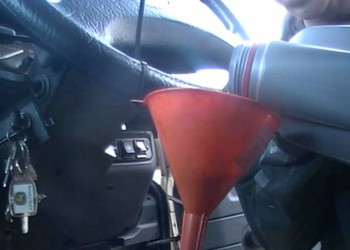If there’s anything worse than an incessantly flickering Check Engine Light (CEL), it’s a rough engine or a bad gas mileage. Which are the things you’d be experiencing if your oxygen sensor has gone bad. Most people’s car maintenance involves just oil changes, engine checks, and maybe looking at the suspension. But the oxygen sensor is as important as any other part of your Land Rover.
Therefore, you need to check in on it regularly and ensure it is in working order if you want what’s best for your Land Rover.
- What is an Oxygen Sensor, and What Does it Do?
The oxygen sensor, also known as a lamda sensor or an O2 sensor, is just another sensor like all the other sensors in your car which monitor the vehicle’s performance. But more specifically, the oxygen sensor is an electronic device that measures the amount of oxygen present in the gases leaving the engine. The percentage of oxygen can tell you a lot about how your engine is running.
If the oxygen level is on the lower side, it means that the fuel mixture in the engine is burning lean. Similarly, if it’s high, that means the engine is burning rich. Needless to say, both are bad for your car. Ideally, the ratio should be 14.7 parts of oxygen to 1 part of fuel.
Besides that, depending on the model, the year, and what kind of engine it has, your car can have anywhere from two to four oxygen sensors at a time. For instance, if your car has a single exhaust system, there’ll be two oxygen sensors. These sensors are usually found along each of the exhaust manifolds and also in front of the catalytic converters.
Moreover, because of the mandatory OBDII regulations, most vehicles must have multiple oxygen sensors that can transmit the oxygen levels to the Powertrain Control Module (PCM) in real time.
- What are the Signs that Indicate you need to Replace the Oxygen Sensor in your Land Rover?
As mentioned earlier, the symptoms of a bad oxygen sensor are pretty annoying and clear. Although, if you don’t pay close attention, you might just end up replacing a perfectly fine part and therefore, wasting your time and money. So, to help you avoid that, we’ve discussed some of the signs that clearly indicate that you need to replace your oxygen sensor.
- - Check Engine Light
This will be the very first sign that there is something wrong with your oxygen sensor. The Check Engine Light on your dashboard will light up. Even though this can happen due to other problems too, a failing oxygen sensor is a common cause.
Since this can get a little confusing, your best course of action would be to get a scanner tool and check for the cause of the illuminated CEL yourself. If it is indeed the oxygen sensor, you’ll know to get it replaced right away.
- - Gas Mileage
Even if you’re able to ignore all other signs, you won’t be able to ignore it if it starts costing you more money. Because a bad oxygen sensor can significantly worsen your car’s gas mileage. The oxygen sensor won’t be able to accurately monitor the oxygen levels. So, the fuel mixture in your engine could be either burning rich or burning lean, both of which lead to inefficient fuel consumption.
If left ignored, the oxygen sensor could become even more inefficient over time. As a result, you’ll start noticing more frequent trips to the gas station.
- - Rotten Smell
The rotten smell from your engine or in some cases, black smoke from your exhaust, will be one of the most obvious signs that your oxygen sensor needs changing. Similar to the bad gas mileage, when the fuel consumption is inefficient, it can lead to an excess amount of fuel in the engine.
This excess fuel causes the bad, sulfuric smell, similar to that of a rotten egg, to come from your engine.
- - Rough Engine and Misfires
Another annoying symptom of a faulty oxygen sensor is engine problems. When the engine is not burning the fuel mixture in the ideal ratio, the fuel consumption and the engine start operating inefficiently. The bad oxygen sensor can cause problems in the combustion intervals, air to fuel ratio, and the engine timing.
As a result, your engine will start sounding rough or running irregularly on idle. Moreover, you might face various other performance issues like misfiring spark plugs, stalling, and loss of power. For any other engine problems, you can consider these ways to solve them.
- How to Replace the Oxygen Sensor in your Land Rover?
With that out of the way, we can now focus on how to actually replace an oxygen sensor. If you choose to get this done by a professional, it can cost you anywhere from $200 to $500. But once you see how easy it is, you’ll see no need to get it done by someone else. You’ll need these tools and parts:
- - Car Jack
- - Wrench
- - New Oxygen Sensors
Although, before you buy the parts, make sure you keep these things in mind. Moreover, you can easily get the necessary tools here and the parts here. Besides that, your Land Rover will most probably have four oxygen sensors: one before and one after each catalytic converter. The steps for replacing each one is basically the same. These are the steps:
- - Raise the vehicle using the car jack to gain access
- - Locate the oxygen sensor
- - Disconnect and bring down the oxygen sensor to a manageable level
- - Detach the old oxygen sensors
- - Attach the new oxygen sensors
- - Connect it and place it back to its original position
Final Words
Even if you haven’t experienced any of the symptoms and problems up till now, you shouldn’t wait for them to appear before getting your oxygen sensor changed. As with all other parts, the oxygen sensor is also prone to deterioration and wear and tear. Generally, it should be changed somewhere between 60,000 and 90,000 miles. Doing so regularly can be quite beneficial for your engine’s performance in the long run.
If you notice any other problems in your Land Rover, you might want to check out the secommon Land Rover malfunctions and how to solve them.






2 comments